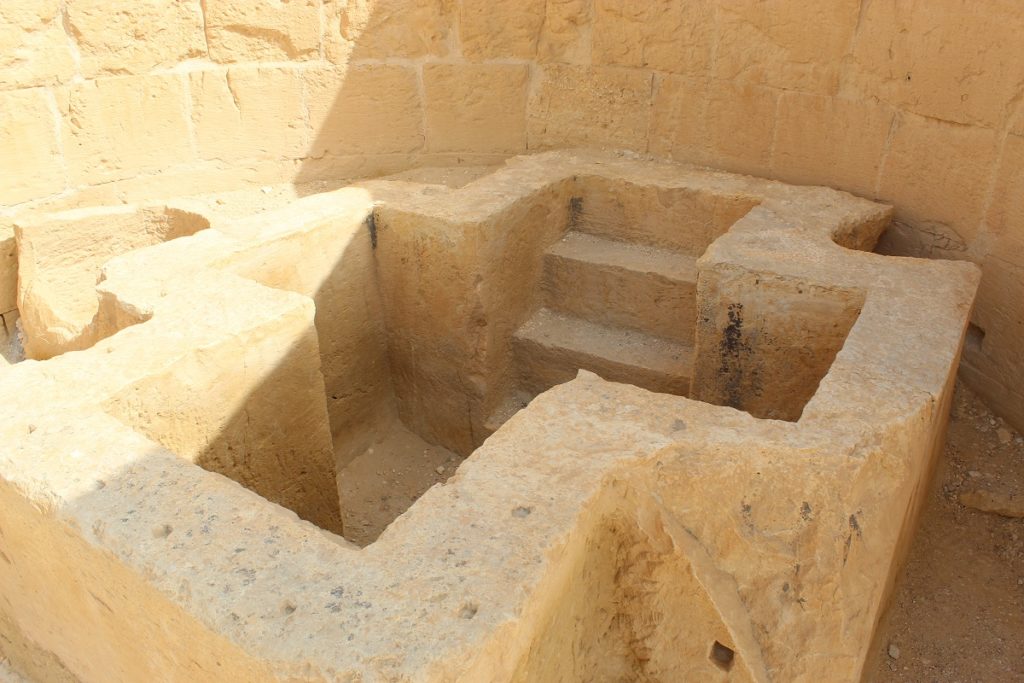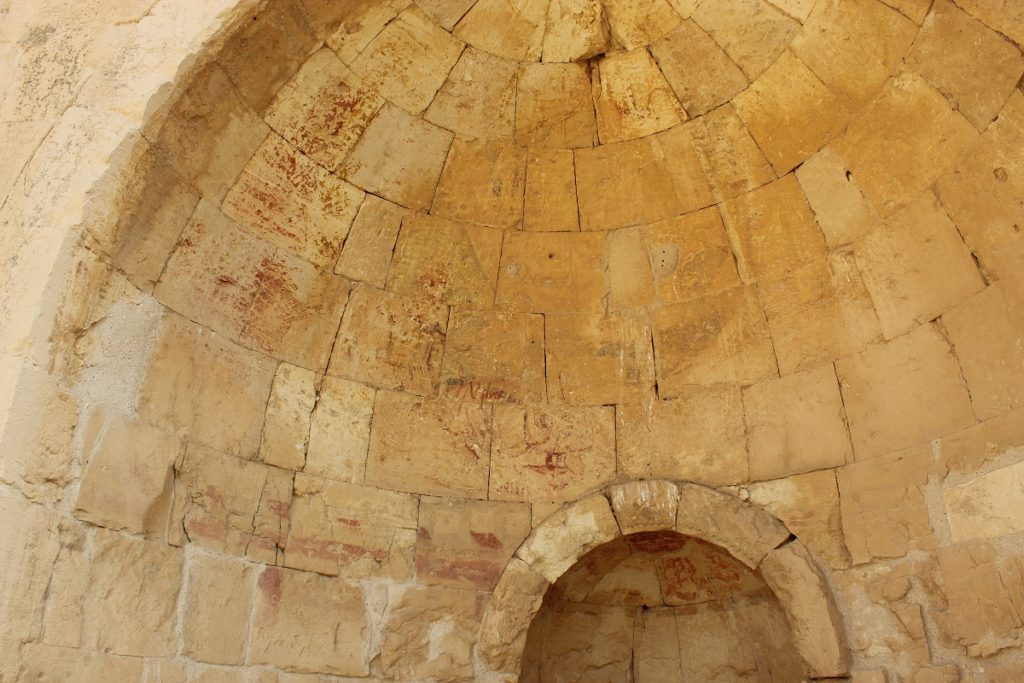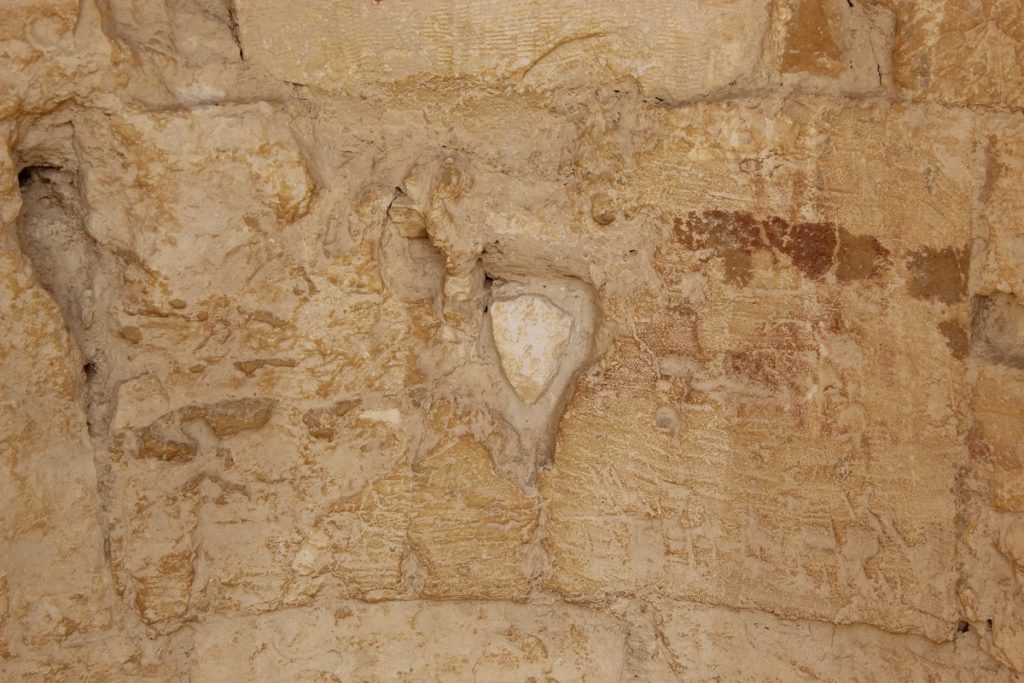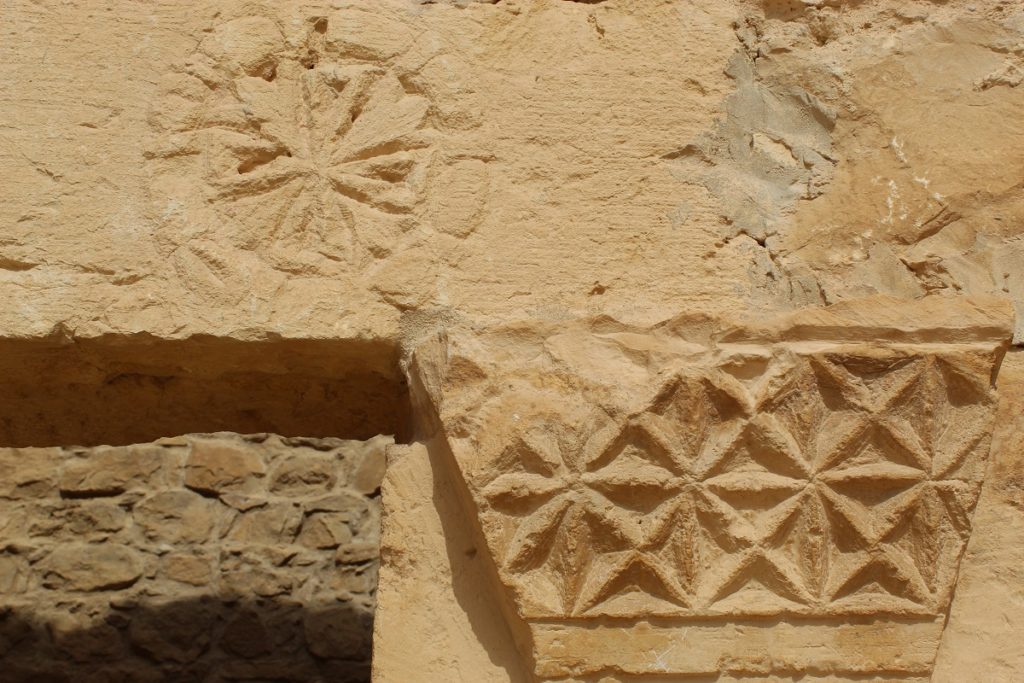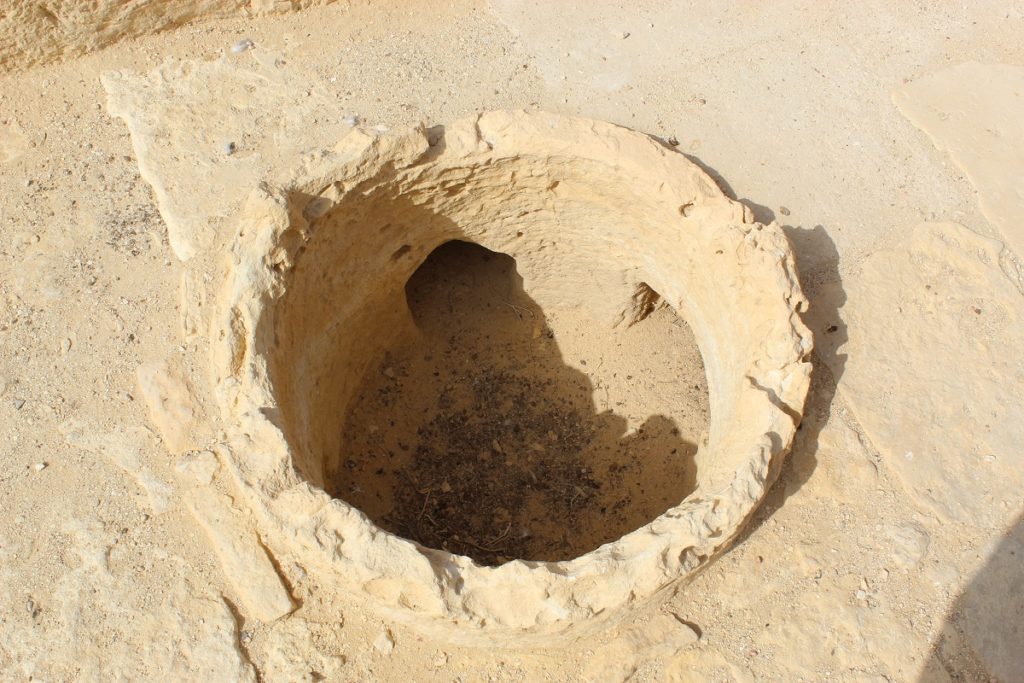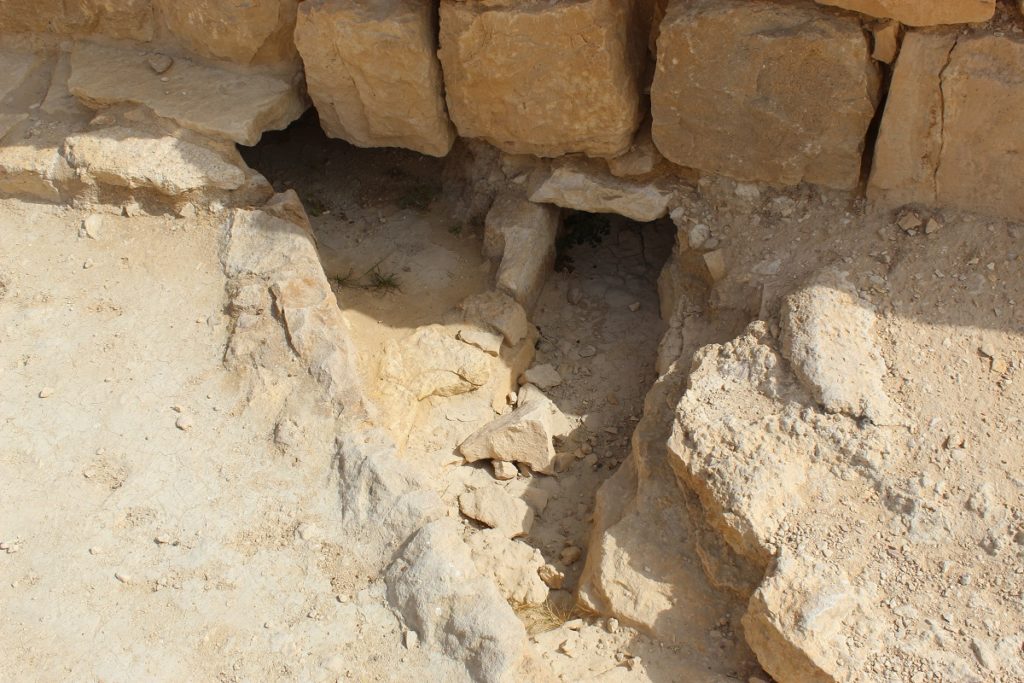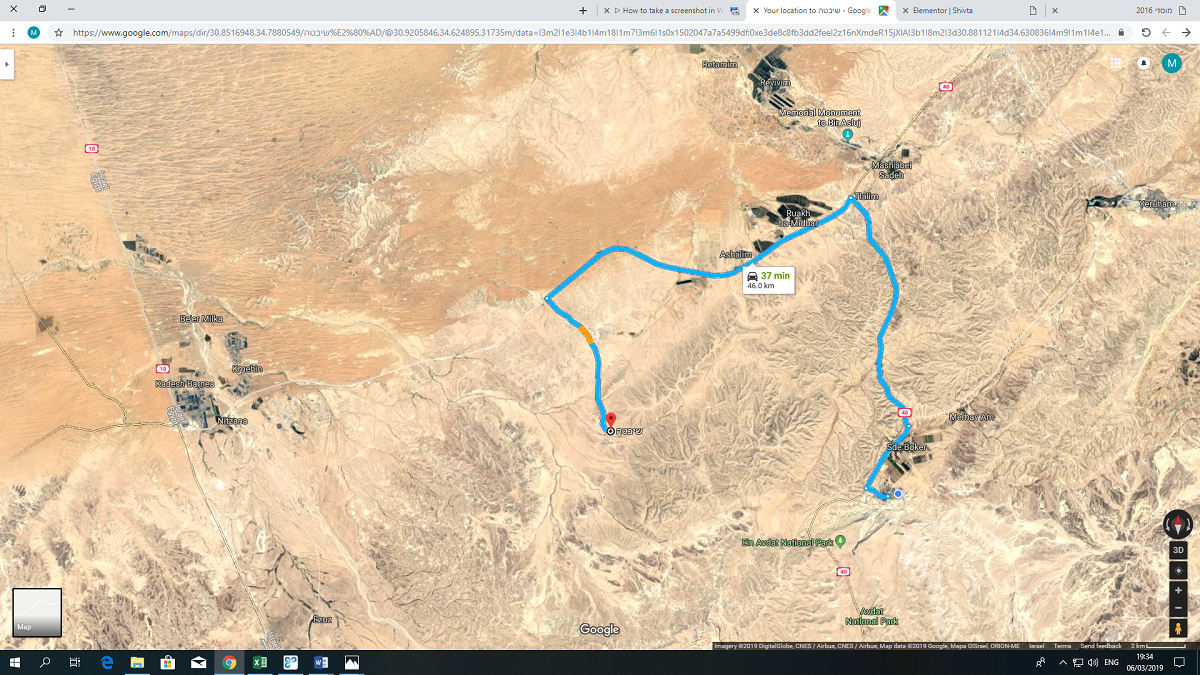Shivta is one of five ruins in Israel’s Negev desert [along with Mamshit, Avdat, Tel Nitzana and Halutza] that were built and inhabited by the Nabateans from 500 BCE to 700 CE. These cities grew in strength and prosperity over 1200 years, and then they died, all of them and all at around the same time.
Why would someone of that era have chosen to make their home in a desert city in the first place? Was it safe to bring up a family? What did they eat? What was their creed? And then why did they suddenly abandon their homes? Shivta now contains the answers to all the above.What do we know about Shivta?
At its height around 600 CE Shivta had 1700 households within its walls; there would have been a larger underclass dwelling beyond. It contained three exquisite churches with dressed marble, columns, statuary, frescoes and mosaics. The lastest discovery on one of the frescoes is what is believed to be a young and curly haired Jesus’ face.
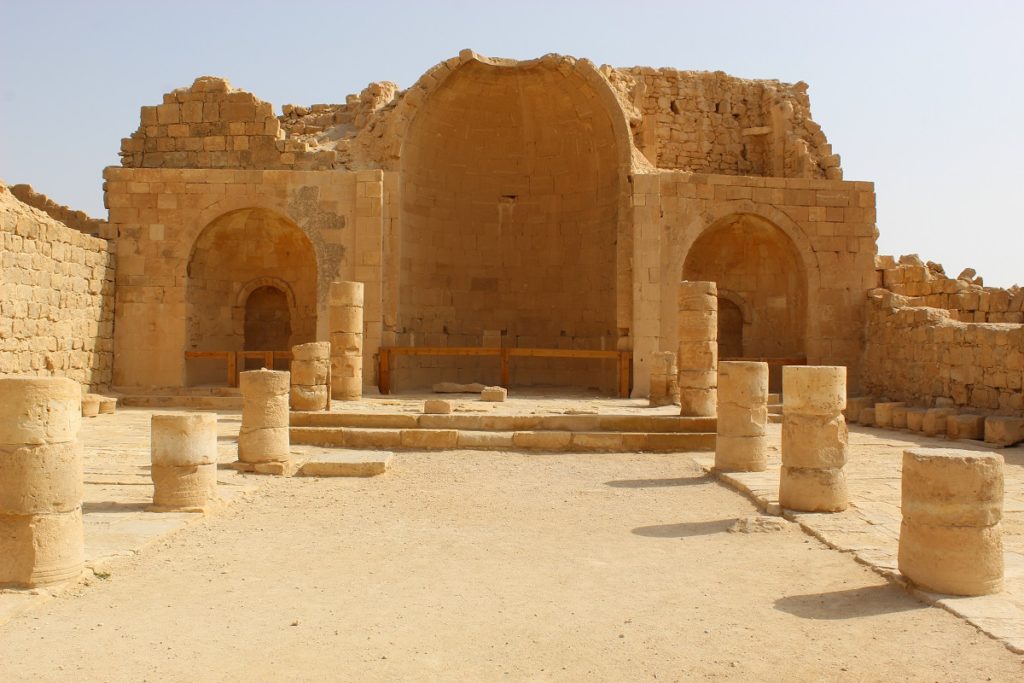
There are also signs of monachal activity.
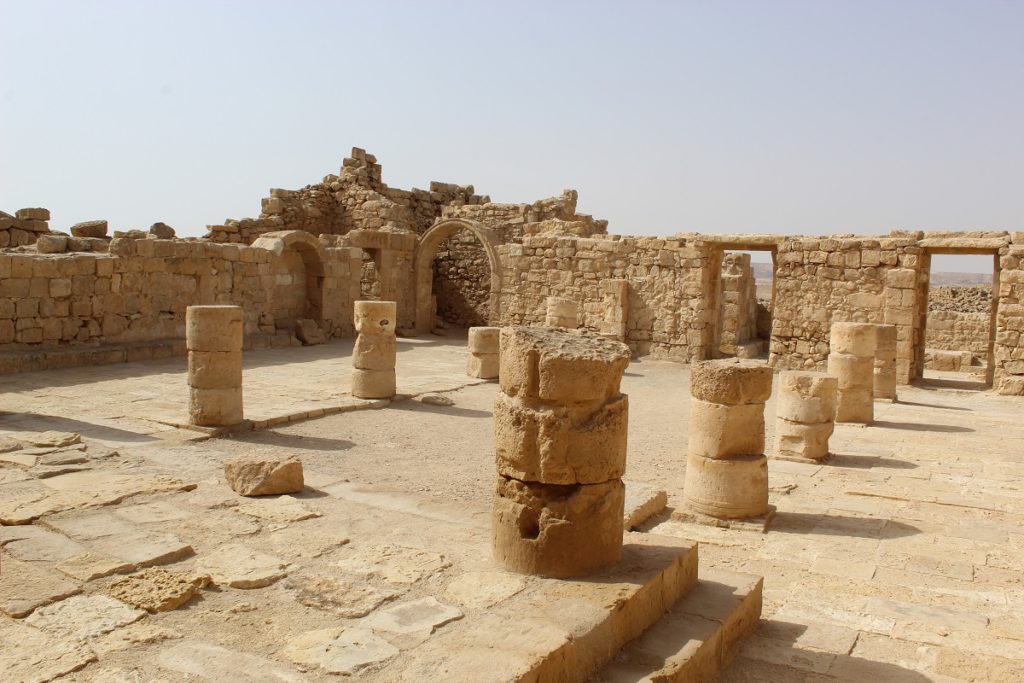
As well as a much smaller mosque, testimony to the fact that the Nabatean people would adopt the religion of the ruler. It is situated right next to South Church, which led researchers to first think it was an example of peaceful cohabitation before changing their mind.
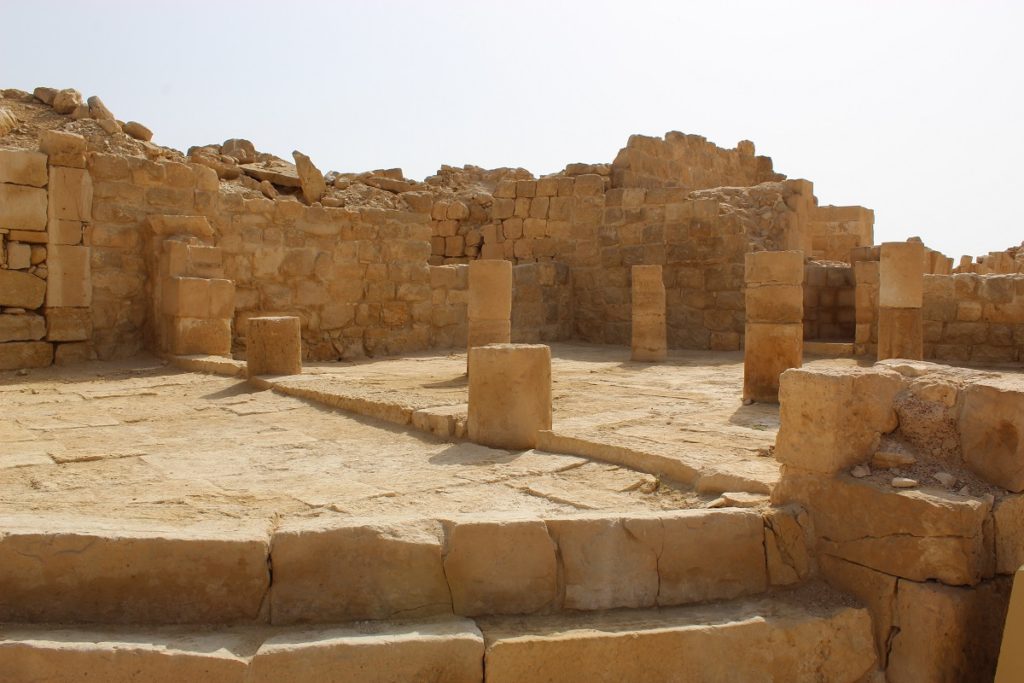
The entire city had an elaborate drainage system
to catch rainwater and direct it through pipes to a central pool or reservoir (which is currently being dug and rumor has it that it could soon be filled with water)
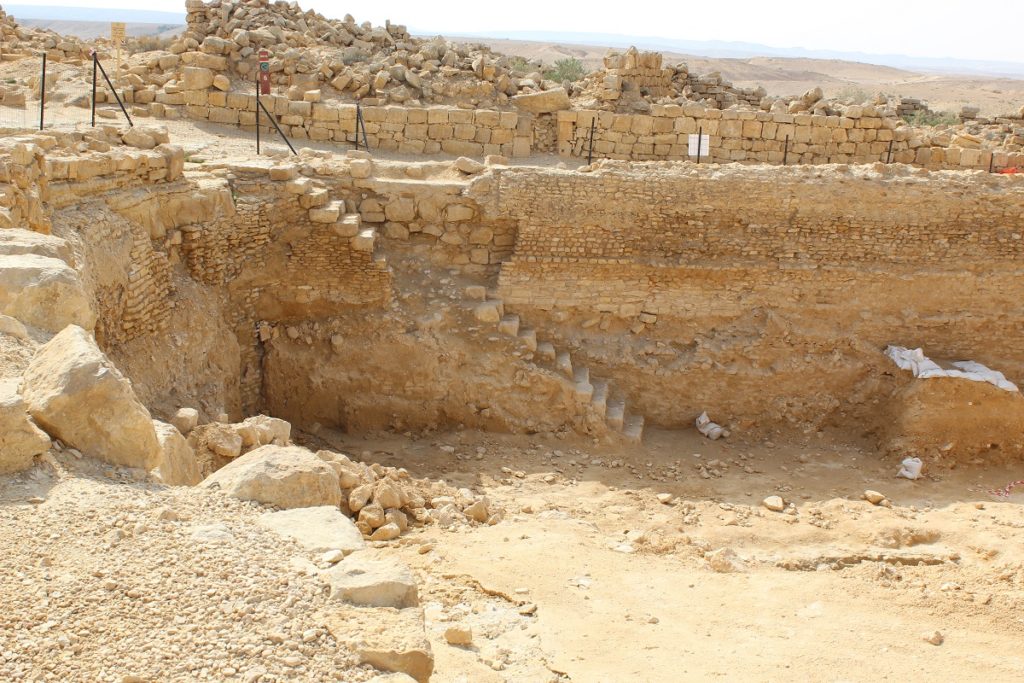
On the perimeter of the city is a large stabling complex that could accommodate 2000 camels at one time. The Nabateans so mastered the art of water conservation that with minimal rainfall and no other water source whatsoever, they were able to provide for the inhabitants, the camels, the camel drivers and the soldiers who passed through, and still have a surplus to grow food for their own needs [wheat, barley, orchards]. Wine was a major cash crop, millions of litres were produced and shipped to Europe (it was known as Gaza wine), and they even bred doves and pigeons in columbines. An additional source of income for Shivta was religious tourism; Christians from Europe passed through Shivta on pilgrimage to Santa Catherina to the south in Sinai; perhaps a cottage industry of souvenirs? We know this desert people could afford to import fish and crocodile for their diet.
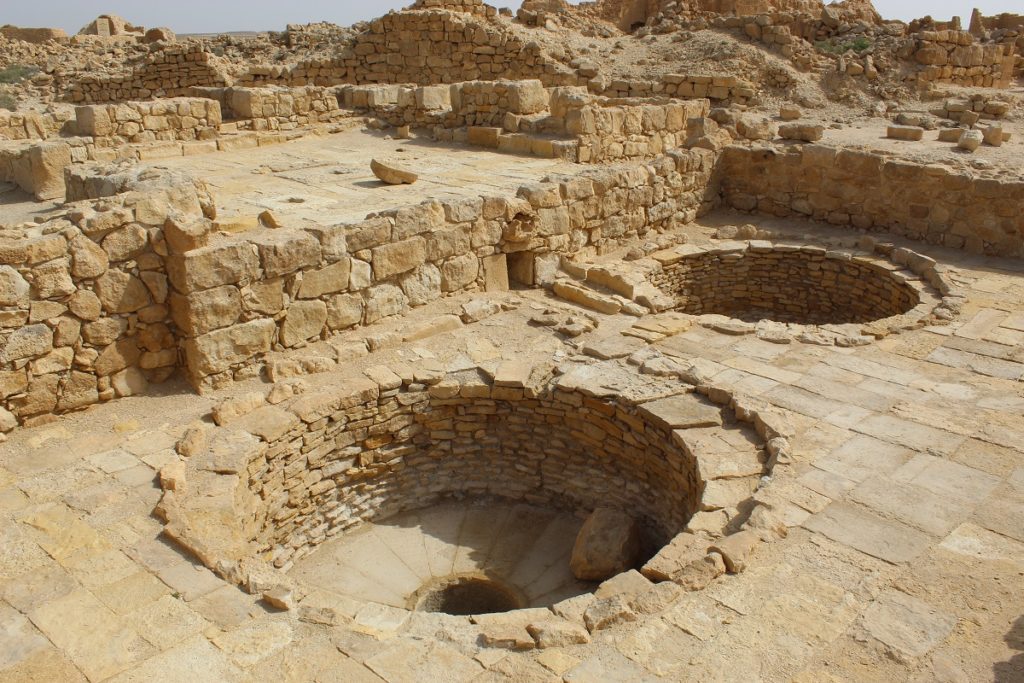
How do we know?
There has never been the kind of money it takes to properly excavate Shivta because there are no Nabateans living in New York or Paris. An attempt was made in 1936 by an Anglo-American expedition financed by Colt of Hartford Connecticut, but it was halted by the Arab Revolt and all its findings destroyed by fire. Amazingly in 2017 the EU funded a dig by Haifa University over two seasons with the objective to discover exactly why the city was abandoned by its inhabitants. Biologists and physicists went in and took samples of the soil, the sediment in the central reservoir, samples from the city rubbish dumps, homes and warehouses were excavated and the results are in the process of being published. At the time of writing the Israel Antiquities Authority are carrying out a major excavation of the reservoir in the city center, so it is all happening. As to the $64,000 question, the conclusion of the team (and all the historical research over the years) is that after the Arab conquest, Christian pilgrimage was discouraged and wine production was proscribed. Without the passage of caravans, without tourism and without the wine business, Shivta went into economic decline. No plague, no invasion, no earthquake. The number of inhabited houses went down one by one to just 20. It must have been a forlorn place to live. The families abandoning their homes boarded up doors and windows with masonry in the expectation that they would return when things got better. Alas!
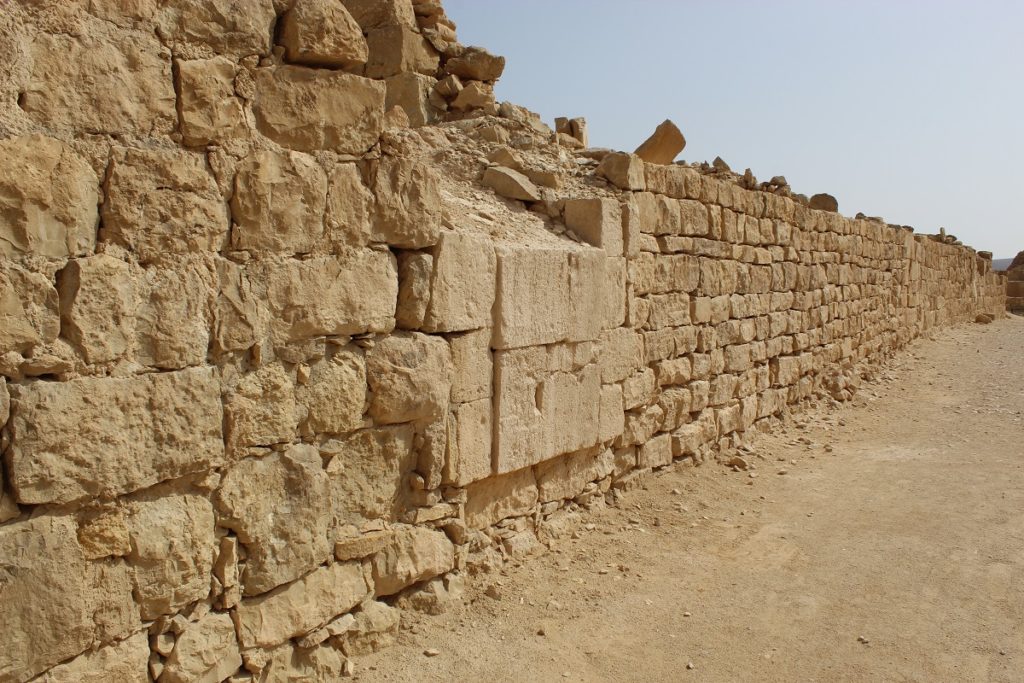
This hidden treasure
Of the five Negev ruins, Shivta (Sobota) is the loveliest and the most interesting. Its special charm is that when you stand on its ramparts looking out into the desert you will see the exact same panorama that they inhabitants saw 2000 years ago. No roads, no pylons, no fences, no buildings, just virgin desert.
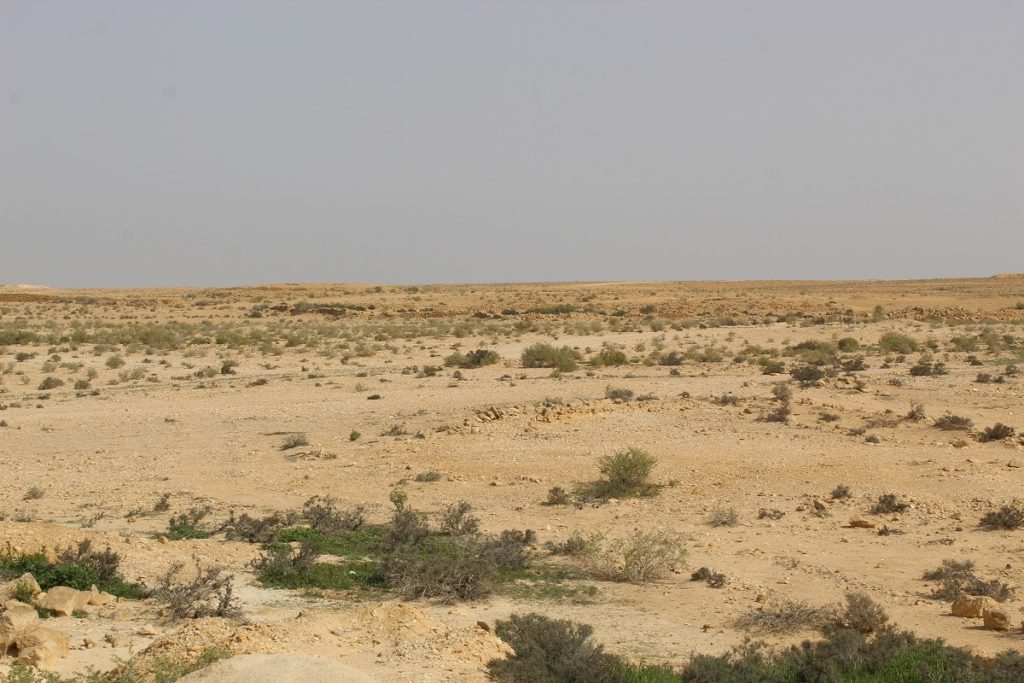
Most of the houses in the city were at least two storey
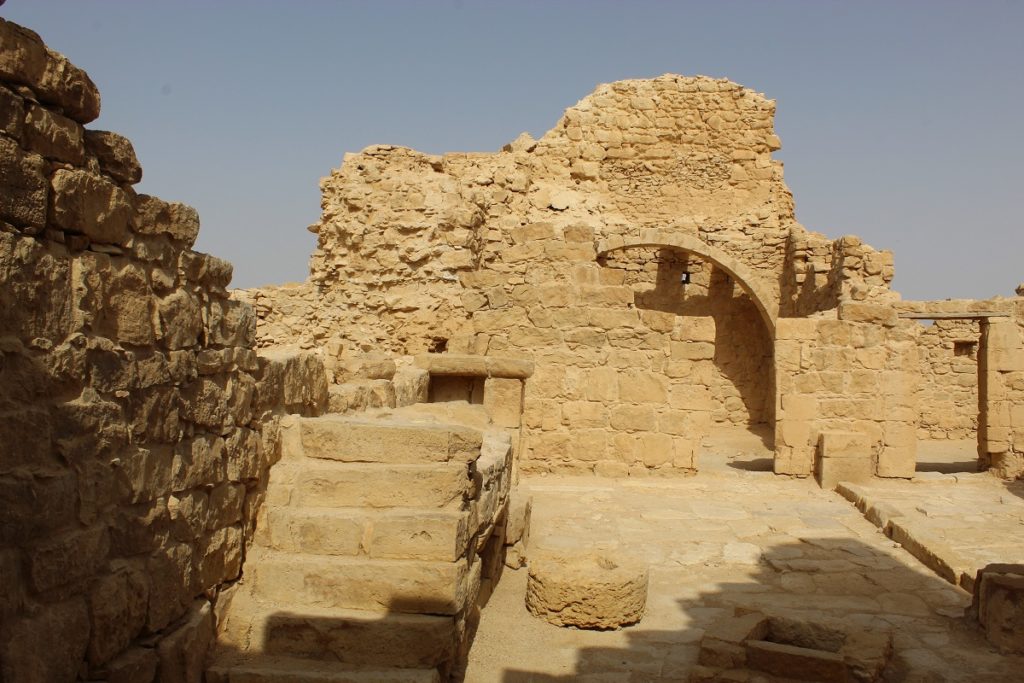
with concealed basements for food storage and for the home-owners to escape the midday heat of the summer. Where they have been excavated it is dangerous for you to enter.
There are no park rangers or guards to advise you, berate you or save you, you will probably be the only people there, so proceed with extreme caution.
Because it is so little-visited there is no entrance fee. Shivta is an absolute treasure and we come to see it as often as we can; one day it will be fenced and guarded, there will be a souvenir shop, a water park in the central reservoir, the car park will be full of coaches and you will have to stand in line to get in. So enjoy it now!
Theatrical guided tour of Shivta
Iris Barazani is a tour guide at Shivta. By arrangement when you arrive, she will appear suddenly in costume and take you back in time to reveal Shivta’s secrets. She takes on four characters, the tour/performance lasts two hours and we highly recommend it.
Iris Barazani +972 50-301-6969
or irisbarazanitourguide@gmail.com
The Nabatean orchard
On your way back to the main road, you can stop at the orchard, a few hundred meters from the parking. As in the Nabatean times, it only gets water from the rain. It is nice and shaded and a good place to have a picnic (no chairs or table).
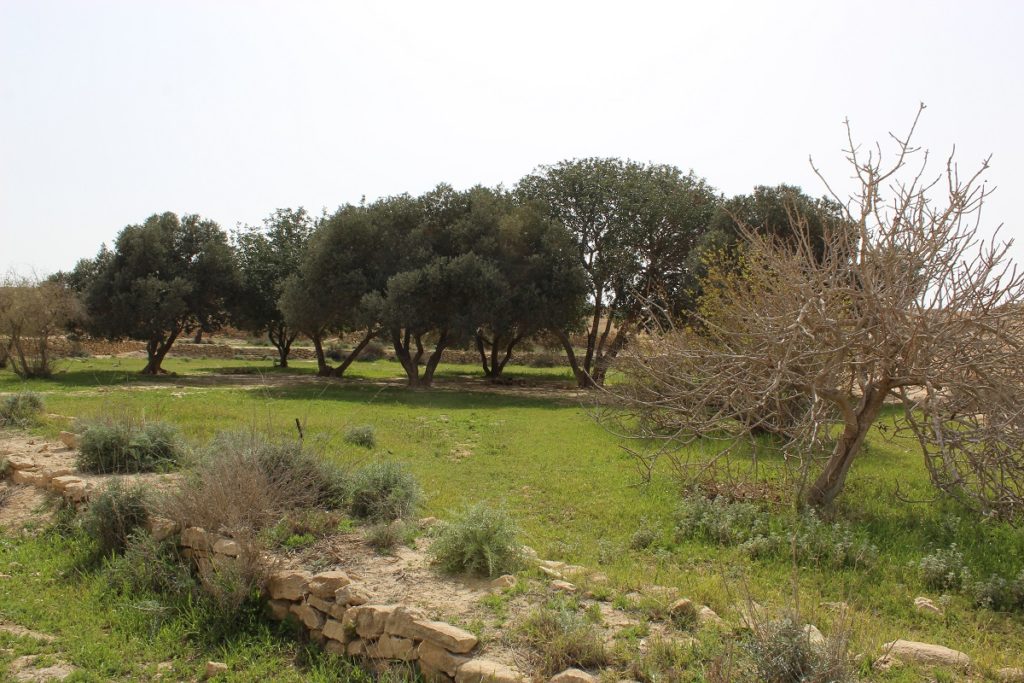
How do I get to Shivta?
Shivta is a 35 minute drive from our guesthouse. You drive North on road 40 to Tlalim junction where you turn left on road 211. Drive south for around 15 minutes until you see a sign for Shivta, turn left. You follow this one-lane tarmac road for 10 minutes [beware of the potholes] until you see the ruins rising out of the desert on your left.
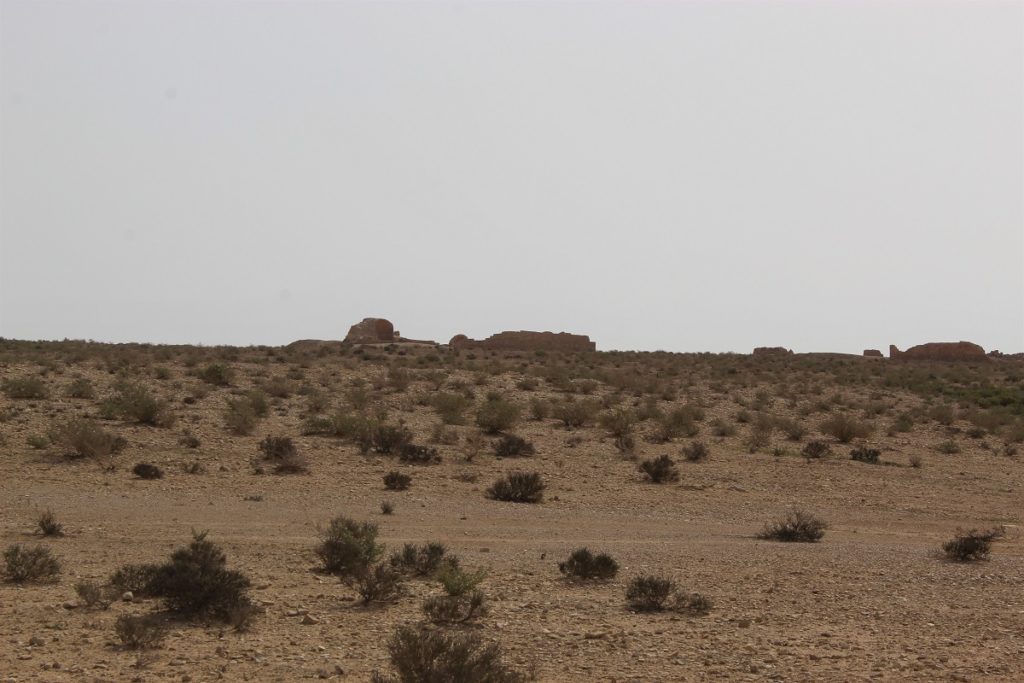
In the summer months go in the early morning or late afternoon; there is no shade. It will take about two hours to inspect the city from end to end.
While you are in the area there’s enough to do for a full day of visit, check out our ‘Nitzana Salient’ post.
This post is also available in:
 Français
Français

